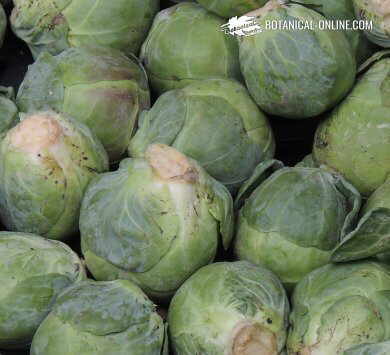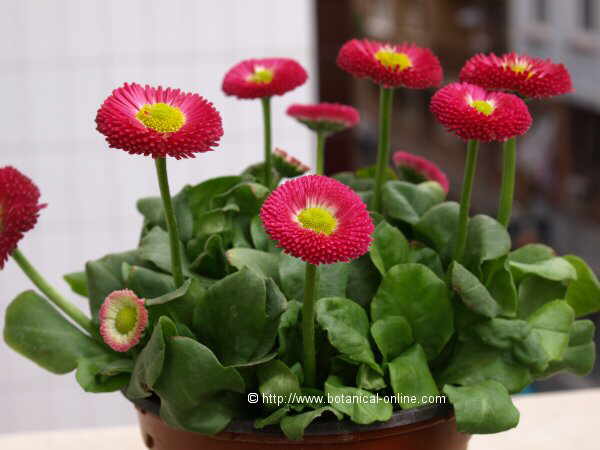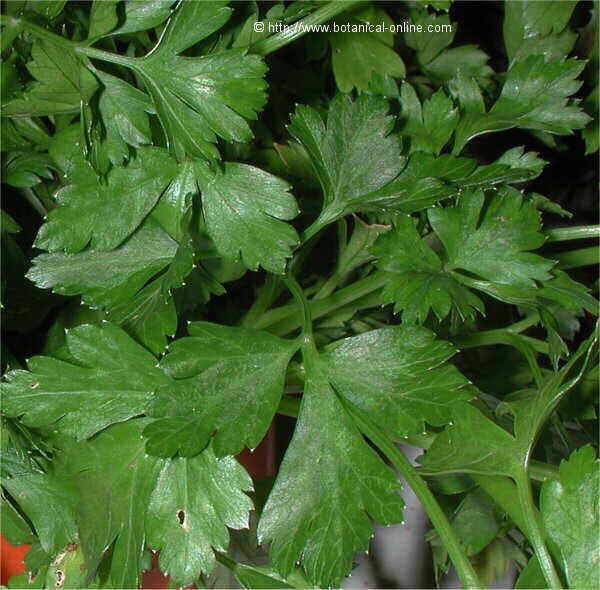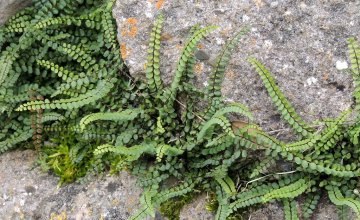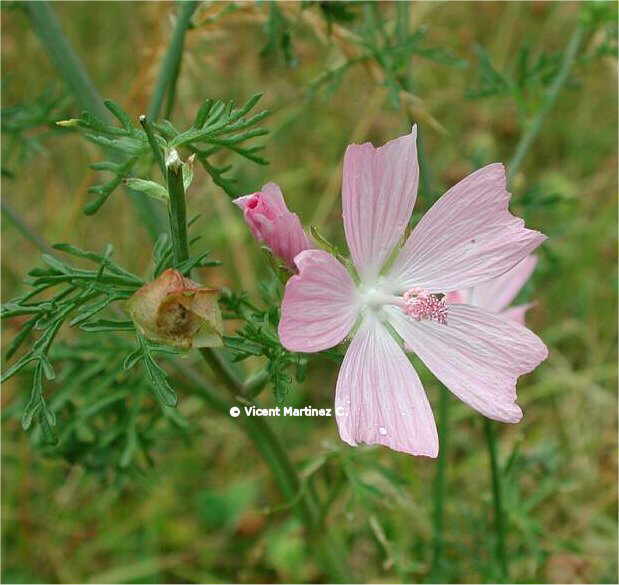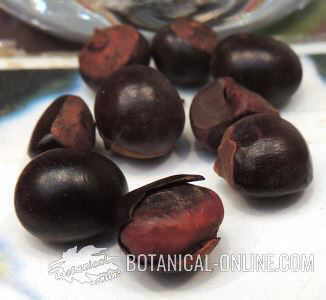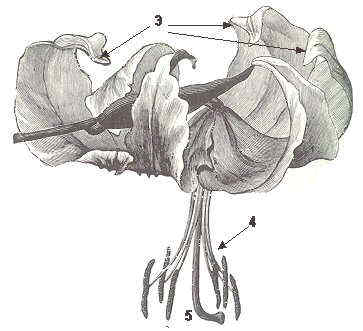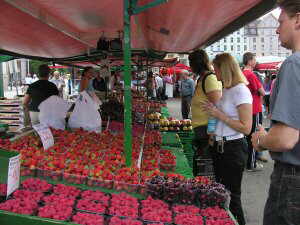Contents
- 1 Growing tomatoes
- 1.1 Tomatoes climate, environment and exposure
- 1.2 How to locate tomatoes?
- 1.3 How are tomates planted in greenhouses?
- 1.4 Tomatoes irrigation and humidity
- 1.5 How to water tomatoes?
- 1.6 Tomatoes soil and fertilizer
- 1.7 How to reproduce tomatoes?
- 1.8 How to stake tomato plants?
- 1.9 Tomatoes weeding
- 1.10 Tomatoes pruning
- 1.11 Tomatoes pinching
- 1.12 Tomatoes fertilizer
- 1.13 Planting tomatoes in two bags
- 1.14 Tomatoes harvest
- 1.15 Crop and harvesting cycle of tomatoes
- 1.16 Tomatoes preservation
- 1.17 Uses of tomato
- 1.18 How to grow tomatoes for industrial production
- 1.19 What are the main characteristics of tomatoes grown for industrial uses?
Growing tomatoes
Tomatoes climate, environment and exposure
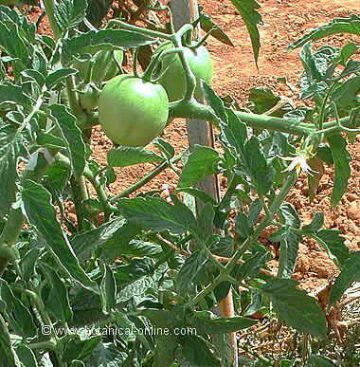
Tomatoes require an adequate climate to grow and develop properly. They need a minimum temperature between 15 and 17 ºC to develop, although their optimum growth temperature is between 20 and 24 ºC. However, with maximum temperatures of 30 ºC or higher they stop growing.
To produce maximum flowering, they require a diurnal temperature between 23 and 26 ºC. To mature properly, the best temperature is between 15 and 22 ºC.
Tomatoes do not accept cold or wind and require a well-lit location, so they should be planted in a sheltered place.
How to locate tomatoes?
Tomatoes can not stand the dark places. It is best to plant them in a place facing south and protected by a fence, wall or wall. When it can not be given adequate protection, it is advisable to protect them from the cold and the wind with a plastic or with a net.
Although tomatoes can be grown outdoors in warm areas, it is best to cover them in warm or cold places.
How are tomates planted in greenhouses?
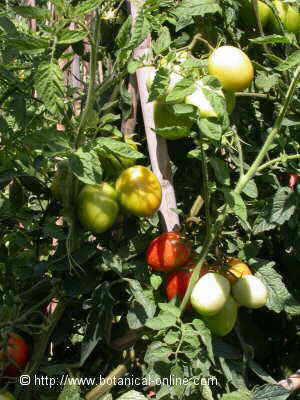
When they are planted in greenhouses, they are not usually planted directly on the ground to prevent their cultivation from developing pests that can contaminate the entire greenhouse floor, with subsequent consequent difficulties to re-clean the land. To avoid this problem they are usually planted in one of the following ways:
- In containers or pots: About 22 cm in diameter and full of compost.
- In containers or pots on ash or boulders: Unlike the previous method, does not allow any contact of the roots with the ground.
- On straw bales supported on plastic, which are subjected to a fermentation process after moistening them for 15 or 20 days and spray them with nitrogen fertilizer. Before planting they are covered with a layer of compost.
- On plastic bags filled with peat: Besides being planted in greenhouses they are useful for planting on terraces, balconies, etc.
Tomatoes irrigation and humidity
Tomato plant needs to maintain the humidity of the soil, so the irrigation of this plant will depend on the type of soil in which they are cultivated:
- With very loose soil: they should be watered in the growing season every day, even a couple of times a day, ideally in the hours of less heat, that is, in the morning and in the afternoon.
- With the most compact soils: it is not necessary to water every day, although it is necessary to check that the soil is humid and provide water when the soil a couple of centimeters below the surface of the earth is dry. The best way to check is to introduce a piece of wood about 2 or 3 cm or your own finger and personally check the degree of humidity.
How to water tomatoes?
Tomato plant should be irrigated by the foot. The irrigations that are effected by sprinkling the plants and are the source of numerous diseases. The most correct way to do it is to fill the ridges where the tomatoes are planted up to the top of them .
In case these plants are planted in the middle of the ridge, the water will be allowed to come a little below the base of the plant and it will be necessary to wait until the earth swallows all the irrigation water to repeat the process. The important thing is that the water does not reach the base of the stems and even less the surface of the leaves. For all these reasons, sprinkler irrigation is totally discouraged.
One way to maintain humidity, increase nutrient content and prevent the appearance of weeds is to mulch the land. Tomato mulching is done by spreading about 2 cm of peat, mulch or compost on the ground.
Tomatoes soil and fertilizer
Tomatoes prefer not very compact soils, instead they live better with loose abundant soil and good drainage. They need a soil rich in potassium and magnesium with an ideal pH that ranges between 5.5 and 7
To be able to develop well, it is necessary that the soil has a high rate of organic matter. Therefore, at the beginning of June, when the soil is being prepared, it is important to incorporate organic manure into the soil, well done at a rate of about 7.5 kg / m2. In addition, it is convenient to add about 130 g / m2 of specific fertilizer for tomato plants.
How to reproduce tomatoes?
Although tomatoes can be planted through seedlings purchased directly from nurseries, in many cases the varieties available are not palatable or too expensive for our budget. Therefore, it may be more convenient to obtain seedlings from seeds obtained in the nursery.
* More information: Tomato seeding, repoting and trasplantation
How to stake tomato plants?
Except for shrub varieties that have a creeping crop, the tomatoes are fastened to a support, which allows them to grow vertically so that the fruits do not touch the ground and rot more easily. On the other hand staking allows a greater profit of the space.
Tomatoes support is carried out after planting the tomatoes in their final place. In the case of outdoor plants, canes or wooden bars are usually used. In the case of greenhouse crops, we will use threads that will be tied to belts or wires
There are many ways to support tomatoes. The simplest is to place a vertical rod next to the stem of each specimen and tie them with an appropriate string, making loose ties that do not tighten the stem too much at a distance of about 30 cm from each other.
However, since tomatoes are grown in groups, the most usual way is as follows:
- Place a cane at the base of each tomato plant.
- Lean it and tied obliquely on the top with the other cane coming from the tomato plant in the opposite row.
- Another horizontal rod can be tied over each pair of rods and serve as a union for each pair of rows.
- In this way the set of rods of each two rows forms a structure reminiscent of a tent.
In the case of tomato plants cultivated in a greenhouse, a different technique is usually used:
- Tie a string in the lower part of the stem
- Guide it vertically to a wire or belt that extends over each of the rows of tomatoes.
- As the plant grows, the string is rolled up around the stem without tightening a lot.
Tomatoes weeding
Apart from keeping the terrain moist at the appropriate times. It is also necessary to keep the land free of weeds. To do this, the soil will be weeded between the plants. A shallow weeding must be realized so as not to injure the roots that grow superficially.
Tomatoes pruning
Tomatoes may need a formative pruning that will provide the proper structure to the plant. It depends on the intended purpose should be made a type of pruning or other. There is a pruning in which all the branches except the main one can be eliminated. This will ensure that the tomato advances production. However, the most common pruning is to leave two or three branches.
Maintenance pruning is used to conserve the structure of the plant, as it grows and consists of eliminating lateral buds and leaves that are in poor condition. For doing this we must:
- Eliminate the lateral shoots that grow in the armpits of the leaves when they are tender
- We will do this only with the fingers. We must bent down and not pull on the branches, so as not to produce wounds that would constitute the entry of numerous pests.
- In case the side shoots have hardened they should be cut with a sharp knife.
Tomatoes pinching
Pinching is a technique that consists of eliminating the main stem bud so a plant does not grow vertically. It has been proven that tomato plants grown outdoors produce no more than four fruit bunches. What we do is to blunt the plants at the height of two leaves above the fourth cluster as they begin to form the fruits. This avoids the vertical growth that would produce more vegetative mass without bearing fruit.
In the case of tomato plants cultivated in a greenhouse, they usually produce about 6 or 7 fruit bunches, so it is recommended to pinch them at the height of two leaves above the 6 cluster. In this type of tomato plants it is also convenient to blunt the lower leaves until the height of the first lower bunch when the plants reach more than one meter. By doing this, we achieve a greater ventilation of the lower part of the plant so that fewer diseases appear.
After pinching , the plant tends to produce new lateral branches that must be eliminated.
Tomatoes fertilizer
In the case of tomato plants planted outside, if the soil has been prepared well before planting, should not need more fertilizer. Indoor tomato plants will require special treatment since the containers do not contain enough nutrients for the complete development of the plant and for the production of flowers and fruits.
When tomato plants are planted on poor soil, they usually manifest it during growth or flowering. The leaves are stunted and the plants grow little. The flowers are usually not abundant. In this case you may need an extra fertilizer when spring arrives with N-P-K compound fertilizer (Nitrogen, Phosphorus and Potassium).
When the flowers take time to form or when they dry very soon after they bloom, it could be a problem of phosphorus deficiency. To solve this problem it might be interesting to add after the flowering superphosphate of lime.
When the leaves have a yellowish white color they can indicate a lack of magnesium. A spray with magnesium sulfate could be interesting.
Planting tomatoes in two bags
Many gardeners plant their tomatoes on two bags instead of one. The lower bag is opened at the top to support the upper bag that opens at the bottom so that it comes into contact with the lower bag and above to plant the tomato.
Although one of the sacks usually contains enough soil for a plant to grow properly, placing two sacks facilitates better rooting. However, its nutrient content is poor. So it will be needed, as it happened in the tomatoes planted in container, additional fertilizer.
To fertilize indoor tomatoes it is best to use specific liquid fertilizer that will be supplied by the irrigation water. Many times it is the horticulturist himself who must specify the amount that his tomato plants need.
A very large development of the plant could indicate the presence of too much nitrogen and a poorer production in fruits. To encourage a good harvest the plants may require more potassium.
Tomatoes harvest
The yield of the tomato plants is very variable according to the variety used, however on average they present a production of 2 to 3 kg of tomatoes per plant, which would represent between 6 and 8 kg per square meter. With a plot of about 40 m2, a production of 240 to 360 kilos should be obtained.
Depending on how they are harvested , there are three types of tomatoes according to the degree of maturation:
- Green ripe tomatoes, with a light green color.
- Dark- green tomatoes : green turning red.
- Red – ripe tomatoes: a very strong red.
In case of being destined to immediate consumption, harvesting should be done by hand, gradually as the fruits are on the point that, in this case, is when they have a dark green color. If they are going to be eaten in salads they must be firmer. The more mature ones can be used to make sauce, to fry or for canned tomato.
Crop and harvesting cycle of tomatoes
The following table shows the characteristics of sowing, transplanting and harvesting the tomatoes according to the crop cycle.
| Crop and harvesting cycle of tomatoes | |
| Cycle | Sowing |
| Extra early | Autumn beginnings |
| Early | Medium fall |
| Medium | Winter beginnings |
| Late | End of spring – early summer |
| Trasplanting | Harvesting |
| Autumn endings (greenhouse) | Mid-winter |
| Mid winter months (protected outdoors) | End of spring |
| End of winter, beginning of spring, after the season of frosts | Throughout summer |
| End of summer | End of summer – mid-winter |
Tomatoes preservation
- If freezing begins, tomatoes that are still green should be picked and stored well spread inside of straw. In this way they finish maturing.
- Tomatoes intended for industry should be collected when they are in the red-ripe stadium.
- Tomatoes destined for immediate consumption, once collected, are subjected to a washing and distribution process in boxes before being put on the market.
- Canned tomatoes should be stored cold:
- In the case that dark-green or green-ripe have been picked, they can be stored for 2 to 4 weeks at temperatures of 10 to 12 ºC.
- If ripe reds have been picked, they can be stored for 1 or 2 weeks at a temperature of 5 ºC.
Uses of tomato

People grow tomatoes for their fruits. Tomatoes are very interesting fruits because of their food properties.
Very rich in vitamin C and vitamin A, they stand out above all for the antioxidant lycopene which is the flavonoid that provides them with their antioxidant properties.
Among the dietary uses of tomatoes we have the following:
- Fresh tomatoes: Used to be eaten as fruit, peeled or with skin, as a dessert after meals or between meals. Fresh tomatoes are also used to eat as vegetables in salads combined with other vegetables such as onions, lettuce, etc.Other varieties of tomatoes are used as decoration for dishes. Cherry tomatoes stand out among these varieties. In this type of tomatoes a series of physical characteristics and quality are appreciated by consumers.
- Canned tomatoes: The tomato preserves allows this fruit to be used in times unsuitable for cultivation. We can make our own canned tomatoes or buy canned tomatoes made industrially.
- Industrially processed tomatoes : Within this type of tomatoes, we have many ways to take advantage of this fruit, tomato juice, tomato puree, tomato concentrate, tomato sauce, tomato confit, peeled tomato, tomato powder, pickled tomato, etc. Of all of them, the most commonly used are natural peeled tomatoes and tomato sauce, especially what is known as Ketchup.
How to grow tomatoes for industrial production
The tomato plants used for industrial production tend to be shrubby tomatoes, which are not subjected to staking and in which the characteristics of the plant are quite different from those intended to produce tomatoes for fresh consumption.
For example, in tomatoes intended to produce preserves, it is more sought that the fruits ripen most at the same time and that this ripening is slower than in tomato for fresh tomatoes.
Although the visual aspect of these last tomatoes is important, their importance is much lower than in the case of tomatoes sold directly on the market.
What are the main characteristics of tomatoes grown for industrial uses?
The main characteristics of the tomato produced for preserves should be the following:
- Consistent fruit and resistant to industrial handling.
- Easy separation of the peduncle. Therefore, most industrial varieties have a specific gene that gives them this property (Gen »jointless»)
- Simultaneous ripening of 70 to 99% of the fruits.
- Plant with a very high proportion of leaves, which protects the fruits from damage caused by the sun.
- Ph between 4.2 and 4.4. Higher Ph’s may require addition of acidulants.
- High viscosity in case of being destined for manufacturing.
- High juice, especially in those destined to produce juices.
![]() More information on tomato
More information on tomato

